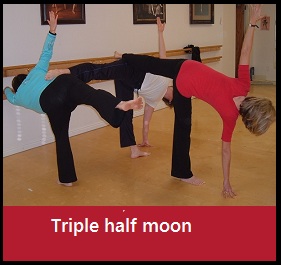I liked this whole article that discusses the 5 Niyamas, so I am reposting here. Spiritual Practice article link
Yoga as a Spiritual Practice
“Although yoga has existed in India from times before the memory of humanity…the need for its physical and psychospiritual benefits has never been greater than in the world today.” – Joanna Cashman, yoga therapist and creator of Radiant Health Yoga
Most of us are well aware of the physical benefits of yoga, such as increasing flexibility and strength. When considering the psychological benefits, relaxation and stress reduction probably come to mind. But how can yoga help with our spiritual development?First, it should be clarified that yoga is not a religion. Although its origins are undoubtedly Eastern (and specifically Hindi), as a spiritual practice, it is compatible with a range of belief systems. For example, Nancy Roth is an Episcopalian minister who instructs her students in how to use yoga as a means of embodied prayer, and frequently uses yoga to deepen one’s experience of the biblical psalms. (See her book “An Invitation to Christian Yoga” for examples.) Thomas Ryan, a Catholic priest, does similar work (as demonstrated on his DVD “Yoga Prayer”).
In addition to using yoga practice as an opportunity for spiritual reflection, understanding basic yogic philosophy can help us consider ways to live more authentically. In the third century BC, Patanjali wrote a series of guidelines for spiritual living that we now call the Yoga Sutras. These include the Five Niyamas.
The first niyama is Shaucha, which means “that and nothing else”, or “living purely”. It involves making conscious choices about what you want and don’t want in your life – for example, eating nutritious food; consuming media that is uplifting rather than violent and degrading; and conserving natural resources. When we live in an uncluttered environment and make purchases carefully based upon what we truly need and want rather than impulsively buying the latest gadget advertised on a late-night infomercial, we are practicing Shaucha.
The second is Santosha, meaning “contentment”. This refers to finding joy from your inner life rather than pining for what you don’t have. It helps us cultivate an attitude of gratitude for what is. This is not to say that if we practice Santosha, we are complacent and tolerate abusive relationships or poor working conditions. However, it does mean that we are patient with our life circumstances. We live as best we can, remaining faithful that living a richer, more authentic life is possible and that the decisions we make will help make this a reality.
The third is Tapas, which literally means “fire” but is defined for our purposes as burning enthusiasm. When we live a life in accordance with our values, our energy is directed more toward personal growth, rather than being eaten up by trivial matters. We have the courage to face reality and the zeal to move forward with a clear sense of purpose.
The fourth is Swadhyaya, or “self-study”. It means being willing to examine our own process and more deeply understand our strengths as well as our limitations. When faced with life’s challenges, Swadhyaya helps us to achieve personal growth by encouraging us to turn inward and discover more about ourselves.
The final principle is Ishvarapranidhana, which means “celebration of the spiritual”. It entails deepening our awareness that there is a higher power that is continually present, supporting us. Yogis believe that all of life’s activities can be spiritual practices, from praying to cleaning the sink. We just need to clear the cobwebs of distraction and dedicate our actions to God to bring greater meaning to our lives.
When considering the niyamas, one can see how closely the themes resemble those of many various Western and Eastern religions. For example, if we take a closer look at Santosha, Tapas, and Swadhyaya, we can see that they roughly correspond to the Serenity Prayer, which has been attributed to St. Francis: “God give me the strength to accept that which I cannot change (Santosha), the courage to change what I can change (Tapas), and the wisdom to know the difference (Swadhyaya).” (This prayer has, of course, also provided inspiration to thousands of participants in twelve step programs, and is related to the Western psychological tenet of locus of control.)
In closing, although Westerners may think of yoga as exercise, it is so much more. The postures simply provide a means of becoming more deeply connected to our true nature and accepting ourselves as we are. When we turn inward and experience self-compassion, this naturally extends to others and ultimately helps us feel deeply grounded in life’s meaning and purpose. In a world in which we are continually distracted by being paged, e-mailed and IM’d, and bombarded by hundreds of ads each week, we truly do need yoga more now than ever.
References
Cashman, J. (2005). Radiant Health Yoga Teacher Training Manual. (Unpublished)
Farhi, D. (2000). Yoga Mind, Body and Spirit: A Return to Wholeness. New York: Henry Holt & Company.
By Alisa Murray
Renton, WA



